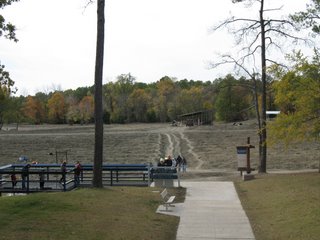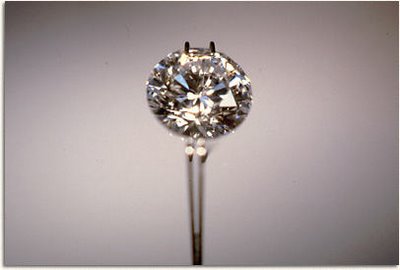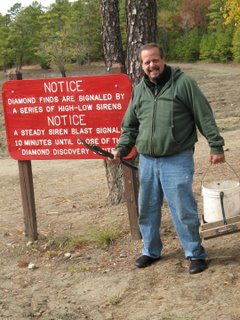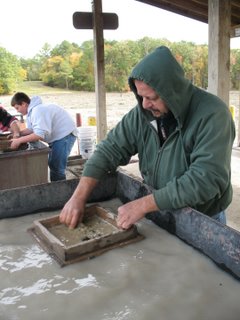
Over 500 diamonds on average are found each year by park visitors. So we stayed at the campground for three nights so we could try our luck for a couple of days. Here's Ed ready to start digging...
The sluicing method invoves washing shovel-fulls of dirt through a coarse screen, then a finer screen.
Diamonds are relatively heavy. They fall to the bottom of the screen with the gravel as the dirt is washed away. So the next step is to turn the screen over like flipping a pancake. Then, search through the remains for metal-like reflective chunks. A magnifying glass helps.
If the sun is shining, another method is to examine the surface of the earth carefully. It's less arduous, but the sluicing method processes a greater quantity of dirt much more quickly.

I knew before I got there that the idea of digging for diamonds was better than the actual work of digging through the dirt. But hey, you never know! Here's our diamond we found!

OK, not really. But this flawless diamond WAS found here. From the park web site, http://www.arkansasstateparks.com/craterofdiamonds here's the lowdown on it.
"The 1.09-carat “Strawn-Wagner Diamond” (3.03 carats in the rough before its cutting in 1997 by Lazare Kaplan International of New York) was found by park visitor Shirley Strawn at the Crater of Diamonds State Park in 1990. This D-flawless gem, a stone that nature formed and then man transformed to the cut and faceted diamond you see today, is the highest grade a diamond can achieve. A diamond this perfect is so rare, most gemologists and jewelers never see one. This diamond from the park is on permanent display in the Crater of Diamonds visitor center."
Although we didn't find a diamond, we learned a lot about the process. Most diamonds found here are worth between $10.00 and $100.00. People next to us found a crescent shaped 6-pt. brown diamond. I have no idea what it was worth, probably not much, but we were happy for them.



No comments:
Post a Comment